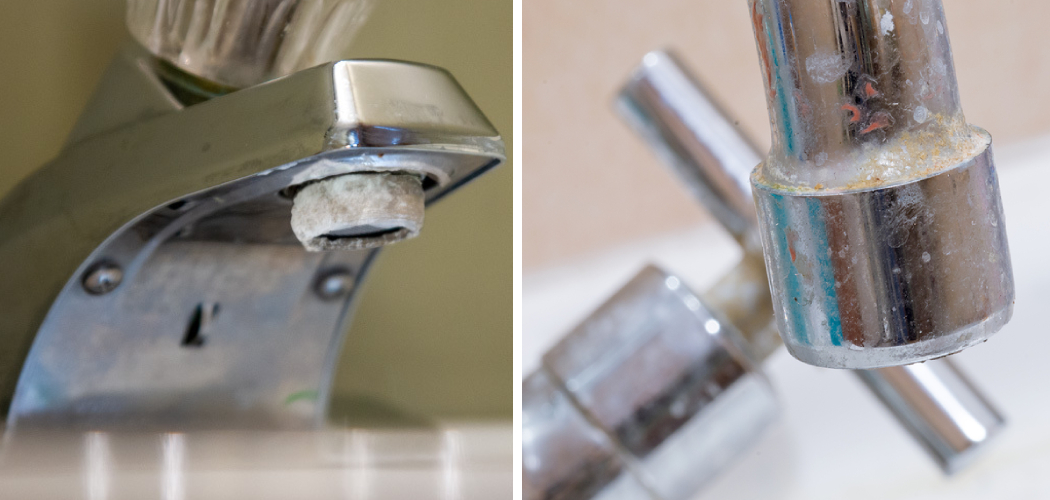If you’ve ever noticed a white film or buildup on your sink faucet, then you know the struggle of trying to clean it off. This hard-to-remove calcium can be frustrating and annoying, but with a few simple steps, it can be cleaned quickly and easily. Cleaning calcium buildup on a sink faucet can be a bit tricky, but with the right ingredients and some elbow grease, it can be done. In this blog post, we will give you a few tips on how to clean calcium buildup on sink faucet. Keep reading for more information!
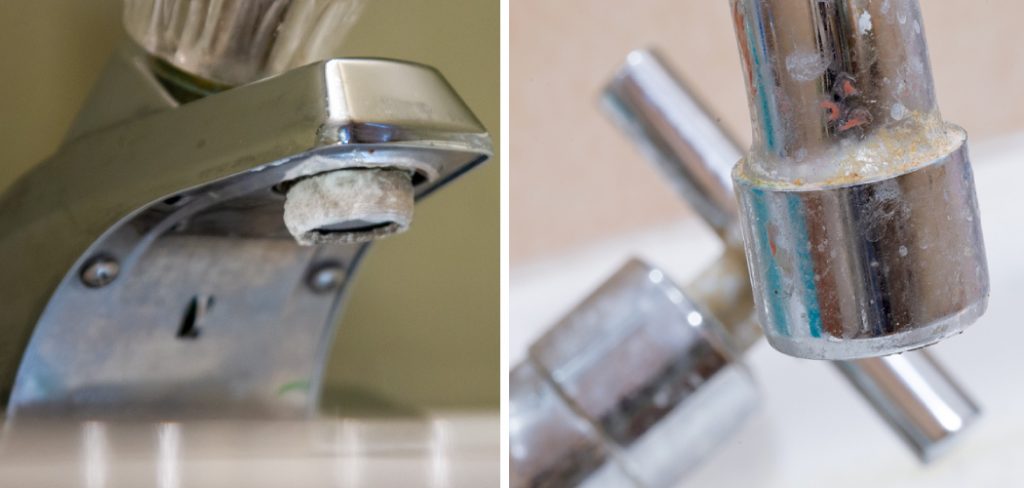
What Is the White Crusty Stuff on My Faucet?
The white crusty stuff that you’ve seen on your faucet is calcium. It builds up over time when hard water passes through the pipes and deposits its minerals onto the sink fixtures. This mineral buildup is commonly referred to as limescale, and it can be very difficult to remove if it has been on the fixture for a while. Although it is annoying, it is not impossible to clean.
10 Methods How to Clean Calcium Buildup on Sink Faucet
1. Use Baking Soda
Baking soda is a natural cleaning agent that can be used to clean calcium buildup on your sink faucet. Simply mix equal parts baking soda and water to form a paste, then apply the paste to the affected area and scrub with a soft cloth. Rinse the area with clean water and dry with a soft towel.
Though baking soda won’t completely remove the buildup, it can help reduce its appearance and make it easier to clean. Make sure to use baking soda on stainless steel faucets only!
2. Use Vinegar
Vinegar is another natural cleaning agent that can be used to remove calcium buildup from your sink faucet. Simply mix equal parts vinegar and water in a bowl, then apply the mixture to the affected area and scrub with a soft cloth. Rinse the area with clean water and dry with a soft towel.
Try to avoid using abrasive sponges or scrubbers, as they may cause further damage. You can also opt to use straight vinegar, but it’s best to dilute it as the acidity of the vinegar may damage surfaces.
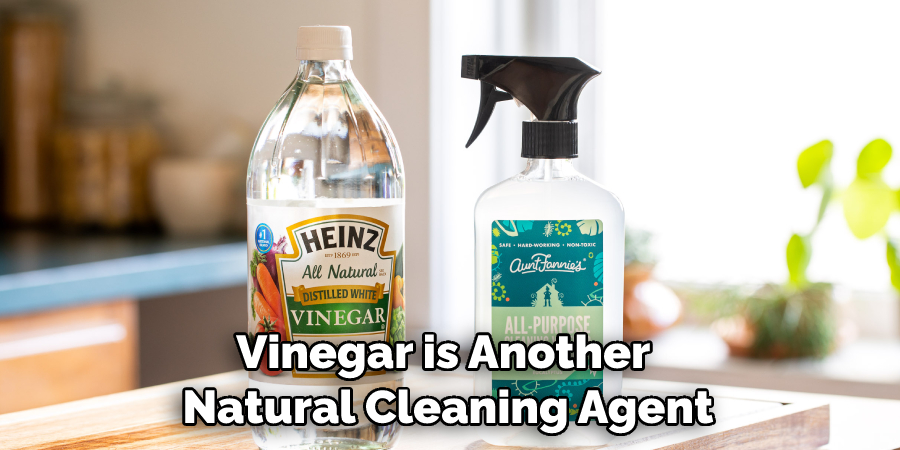
3. Use Lemon Juice
Lemon juice is another natural cleaning agent that can be used to clean calcium buildup on your sink faucet. Simply apply lemon juice to the affected area and scrub with a soft cloth. Rinse the area with clean water and dry with a soft towel. However, remember to avoid harsh abrasives when cleaning with this method, as it can damage the finish of your faucet.
You may also want to consider using a sealant or wax product to protect your faucet from future buildup. Additionally, this method works best when the calcium build-up is still relatively fresh. For more stubborn calcium deposits, you may need to resort to other methods of cleaning.
4. Use Cream of Tartar
Cream of tartar is a substance that is derived from tartaric acid, which is found in grapes. It can be used as a natural cleaning agent to remove calcium buildup from your sink faucet. Simply mix equal parts cream of tartar and water to form a paste, then apply the paste to the affected area and scrub with a soft cloth. Rinse the area with clean water and dry with a soft towel.
However, it may be wise to test a small area of the fixture first before applying the paste in order to make sure that it is compatible with the material. This will help to avoid any potential damage to the fixture.
5. Use Borax Powder
Borax powder is a natural cleaning agent that can be used to clean calcium buildup on your sink faucet. Simply mix equal parts of borax powder and water to form a paste, then apply the paste to the affected area and scrub with a soft cloth.
Rinse the area with clean water and dry with a soft towel. However, be sure to wear protective gear such as gloves, goggles, and a mask when using borax powder. Additionally, avoid using any acidic solutions on your faucet, as this can cause further damage.
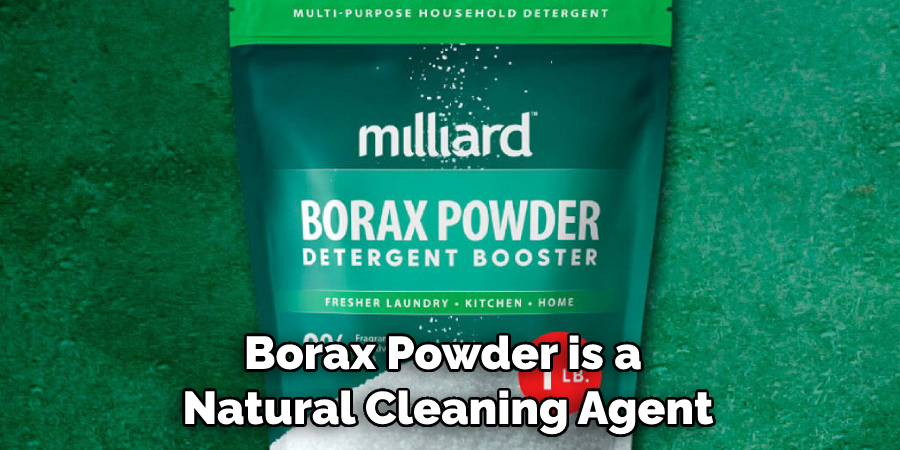
6. Use Ammonia
Ammonia is a chemical compound that can be used as a natural cleaning agent to remove calcium buildup from your sink faucet. Simply mix equal parts ammonia and water in a bowl, then apply the mixture to the affected area and scrub with a soft cloth.
Rinse the area with clean water and dry with a soft towel. While this method is effective, you should use caution with ammonia as it can be a powerful irritant to eyes and skin. Also, avoid using it on metal fixtures as it can cause corrosion.
7. Use Hydrogen Peroxide
Hydrogen peroxide is another chemical compound that can be used as a natural cleaning agent to remove calcium buildup from your sink faucet. Simply apply hydrogen peroxide to the affected area and scrub with a soft cloth. Rinse the area with clean water and dry with a soft towel.
Although hydrogen peroxide can be an effective way to remove calcium buildup, it should not be used on marble or other porous surfaces as it can cause discoloration. Additionally, it is important to wear protective gloves and safety glasses when handling hydrogen peroxide.
8. Use CLR (Calcium Lime Rust) Remover
CLR is a commercial cleaner that can be used to remove calcium buildup from your sink faucet. Simply apply the CLR to the affected area and scrub with a soft cloth. Rinse the area with clean water and dry with a soft towel. However, be sure to wear safety glasses and rubber gloves while using CLR, as it may contain harsh chemicals.
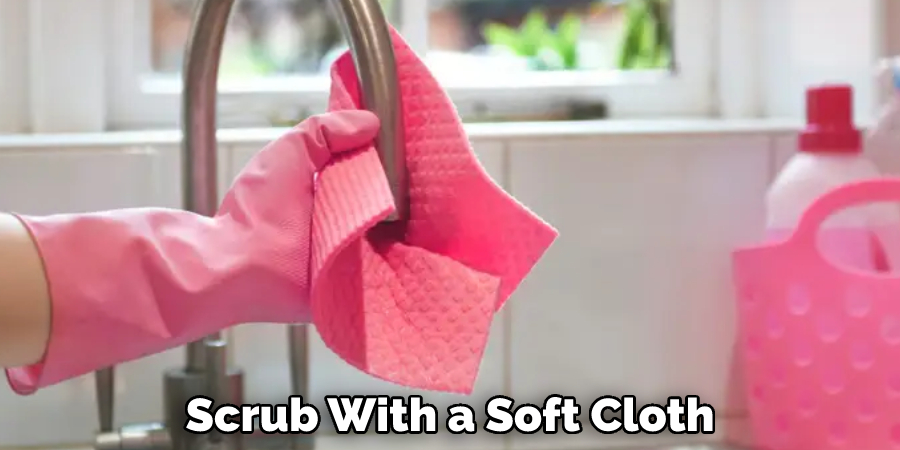
If you have any allergies, make sure to check the product label for any warnings. Additionally, do not use CLR on polished metals or colored surfaces, as it may damage them. After you have used the CLR, you may need to reapply it periodically in order to keep your sink faucet clean and free from calcium buildup.
9. Use Club Soda
Club soda is a carbonated beverage that can be used as a natural cleaning agent to remove calcium buildup from your sink faucet. Simply apply club soda to the affected area and scrub with a soft cloth. Rinse the area with clean water and dry with a soft towel. Additionally, club soda can be used to clean countertops, tile floors, and bathtubs. This substance is a great all-purpose cleaner that works without any harsh chemicals.
10. Use Toothpaste
Toothpaste contains abrasive agents that can be used to clean calcium buildup on your sink faucet. Simply apply a small amount of toothpaste to the affected area and scrub with a soft cloth. Rinse the area with clean water and dry with a soft towel. Make sure not to use too much toothpaste, as it can scratch the surface of your faucet. Additionally, you may need to repeat this process if the calcium buildup is stubborn.
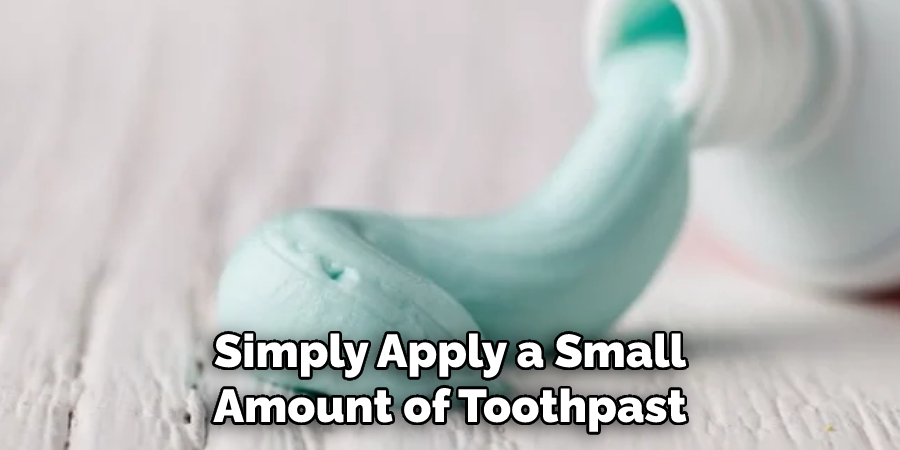
By following these ten methods, you can easily remove calcium buildup from your sink faucet. However, if none of these methods work, it’s best to contact a professional plumber for help. Remember that regular maintenance is key when it comes to preventing future calcium buildups on your sink faucet!
***
Things to Consider While Cleaning Calcium Buildup on Sink Faucet
- Use a mixture of white vinegar and water. The vinegar will help remove the calcium buildup, while the water will dilute it so that it can be easily washed away.
- If you find that the vinegar solution is not strong enough to get rid of all the built-up material, try using a stronger cleaning product like CLR or Lime Away. These products are specifically designed to remove tough stains and limescale deposits.
- Make sure to wipe down the surface after you have used any cleaning solutions. This will ensure that no residue is left behind on your sink faucet, which could cause further buildup.
- Always wear protective gloves when handling any kind of chemical cleaner, as they can be hazardous to your health.
- Use a soft cloth or sponge instead of an abrasive cleaner to eliminate any scratches on the surface of your sink faucet.
- Make sure to rinse away all traces of cleaning solution after you have completed your task. This will help ensure that no residue is left behind, which could cause further calcium buildup.
Conclusion
If your faucet is starting to show some wear and tear, it might be time to give it a good cleaning. Calcium buildup can be unsightly and make your faucet less efficient. Follow these steps to clean up your sink fixture in no time. With a little elbow grease, you can restore your faucet to its former glory. However, if the calcium buildup is too severe or stubborn, you may need to consult a professional for further help.
Remember to always wear protective gloves when handling any kind of cleaning solution and to rinse the surface thoroughly after you have finished your task. This will help keep your sink fixture looking great for years to come.
Thanks for reading our blog post on how to clean calcium buildup on sink faucet! We hope you found it helpful and informative.
You Can Check It Out to Unclog a Toilet Vent

